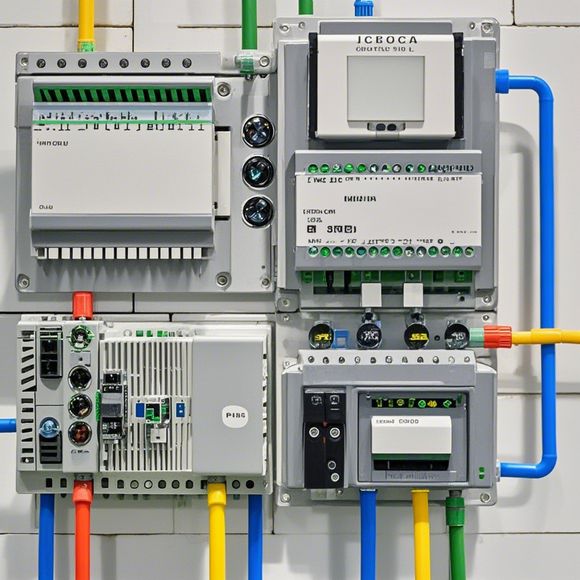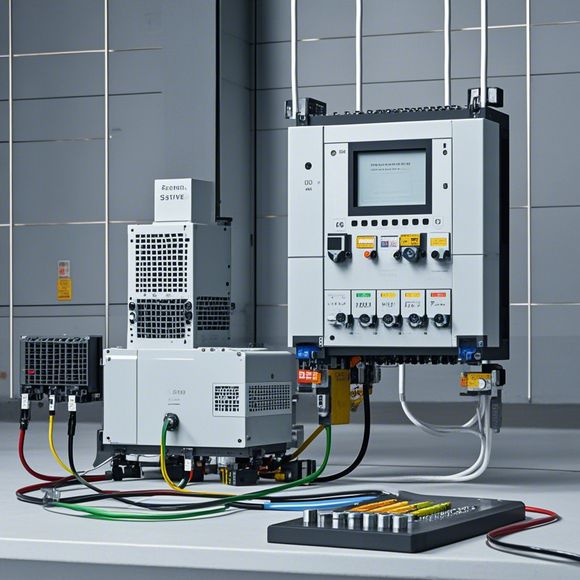PLC Controller Overview: A Primer on How it Works
PLC Controllers are an essential part of modern industrial systems, providing a centralized means to control and monitor various processes. Here's a quick overview of how they work:1. **Input Devices**: These devices convert the input signals from human operators into digital signals that can be processed by the controller. Common types include buttons, switches, and sensors.2. **Processing Unit**: The processing unit is where all the data is sent from the input devices. It interprets and processes incoming signals, making decisions based on predefined algorithms.3. **Output Devices**: These devices send commands to the actuators, which in turn control the physical processes in the system. This could be lights, motors, or any other device used to manipulate the system.4. **Networking**: Modern PLC controllers often feature built-in networking capabilities. They can connect to other devices within the same network, allowing for real-time communication and control of the system.5. **Programming Language**: Many PLC controllers are programmable using specific languages, such as Ladder Diagramming, Function Block Diagram (FBD), and Structured Text (ST). These languages allow for the creation of customized control logic that can be tailored to specific needs.Overall, understanding the basics of how PLC controllers work is crucial for anyone involved in industrial automation projects. With proper programming and configuration, these controllers can significantly improve efficiency and reduce downtime.
In the world of manufacturing and automation, PLCs (Programmable Logic Controllers) play a crucial role. These controllers are designed to automate various industrial processes and systems, making them an essential component in any modern manufacturing facility. In this essay, we'll delve into the working principles of these powerful devices, providing a comprehensive overview for those interested in understanding their role and functioning.

To begin with, let's first understand what a PLC is. A PLC is a computerized control system that can be programmed to perform specific tasks. It works by receiving commands from a user interface, processing them, and then controlling various devices within the system. Unlike traditional mechanical controllers, PLCs offer flexibility, reliability, and ease of programming.
One of the most significant advantages of using PLCs in manufacturing settings is their ability to handle complex processes efficiently. With the help of advanced algorithms and sensors, PLCs can detect and respond to changes in parameters such as temperature, pressure, or flow rate. This enables them to maintain optimal performance levels throughout the process, ensuring consistent quality and efficiency.
Another key feature of PLCs is their ability to communicate with other systems within the factory. By integrating with other software and hardware components, PLCs can work together seamlessly to create a cohesive automated workflow. For example, they can be used to coordinate machine tool operations, monitor inventory levels, and even control energy consumption.

When it comes to programming, PLCs offer a range of options for users to choose from. Some manufacturers provide pre-built programs, while others allow users to write custom code based on their specific requirements. This flexibility allows for greater customization and optimization of the system, making it more adaptable to different applications.
One of the main challenges associated with using PLCs is programming. Unlike traditional controllers, which have straightforward instructions written out in code, PLCs require a deeper understanding of logic and algorithmic thinking. This requires a good grasp of basic programming concepts such as conditional statements, loops, and functions. Additionally, some PLCs may also require knowledge of specific hardware modules, such as input/output ports or motor drivers.
Despite their complexity, the benefits of using PLCs in industrial settings cannot be understated. They offer unparalleled flexibility, reliability, and efficiency in controlling complex processes. By leveraging the power of these controllers, businesses can streamline operations, improve quality control, and reduce downtime. As such, investing in PLCs is often seen as a smart move for any manufacturing enterprise looking to stay ahead in the competitive landscape.

In conclusion, understanding the working principles of PLC controllers is crucial for anyone looking to implement automation in their industrial operations. By exploring the features, benefits, and challenges associated with these controllers, businesses can make informed decisions about how to best use them to achieve their goals. So, if you're ready to take your automation to the next level, don't forget to explore all the possibilities that PLCs have to offer!
Content expansion reading:
Articles related to the knowledge points of this article:
PLC Programming for Automation Control in the Manufacturing Industry
How to Use a PLC Controller for Your Business
PLC (Programmable Logic Controller) Control System Basics
Plumbers Rule! The Role of PLC Controllers in the World of Waterworks
The Role of Programmable Logic Controllers (PLCs) in Foreign Trade Operations